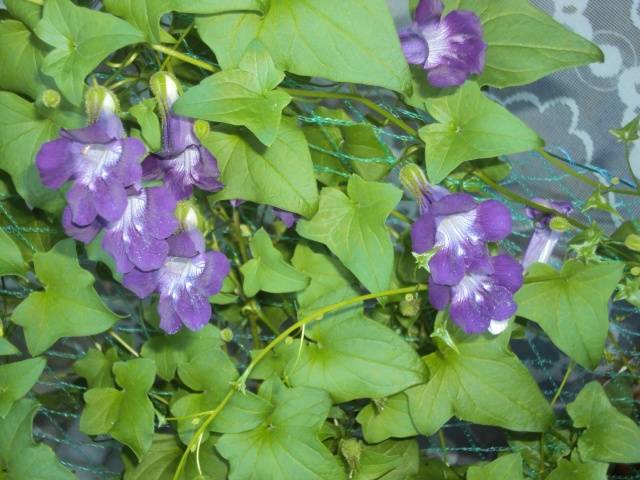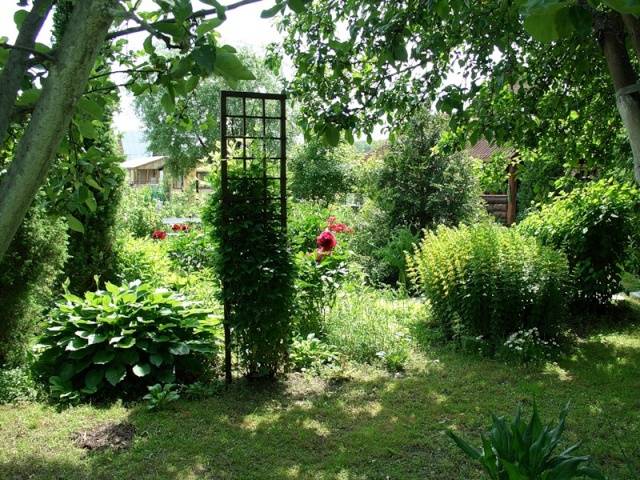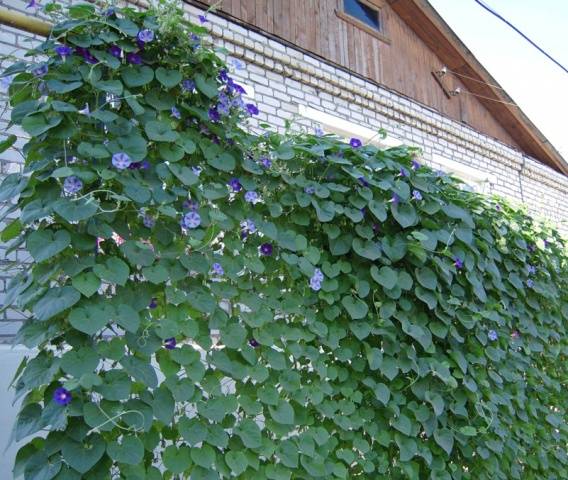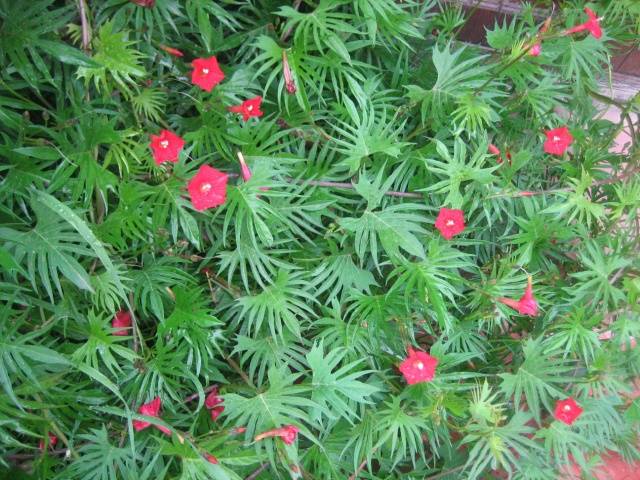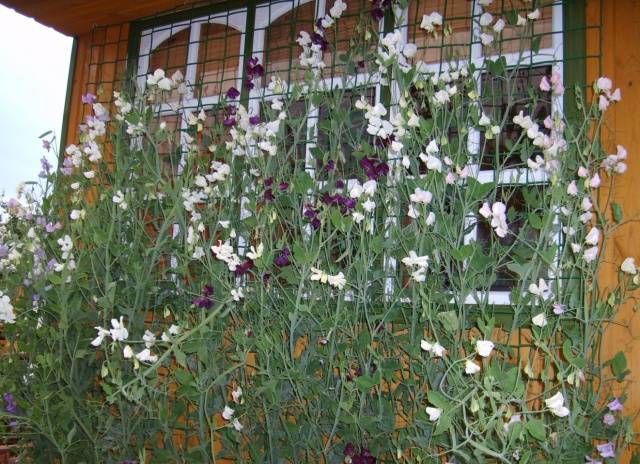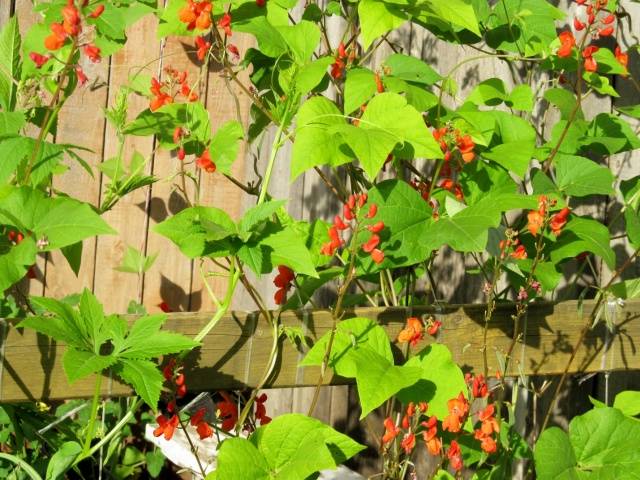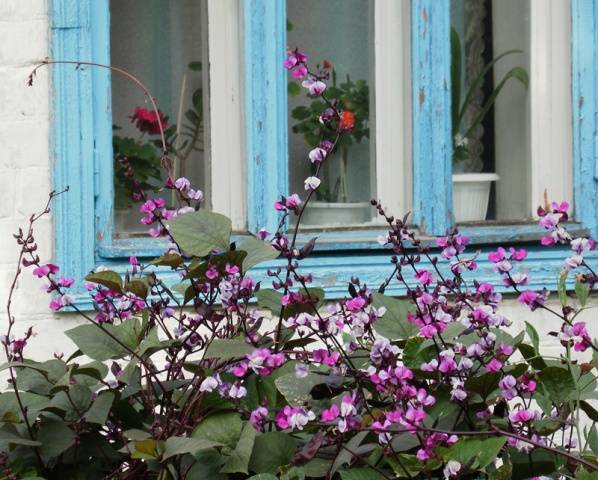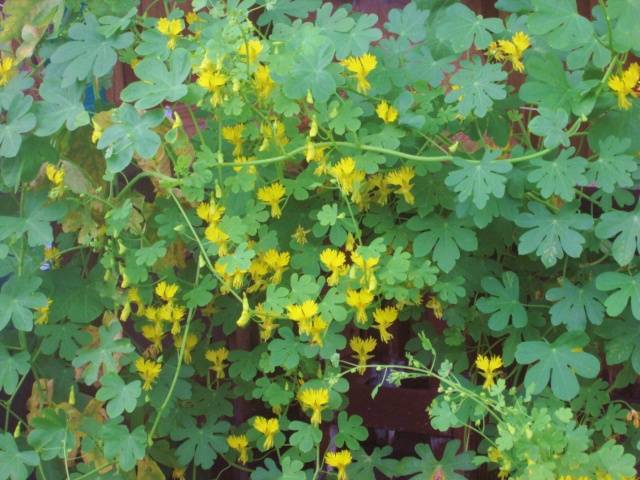Content
Many summer residents are thinking about how to ennoble the site with plants. Especially if the dacha is a country courtyard with useful, but unpresentable buildings. Curly ones come to the rescue annual flowers, which will successfully decorate any shed, palisade or netting. The advantage should be given to climbing one-year-olds due to the fact that next year it is possible to change other plants or demolish structures. Unpretentious curly annuals are loved by connoisseurs of fleeting beauty. They are grown not only in the countryside, but also on city balconies.
Benefits of vertical gardening
Recreation areas of climbing plants in suburban areas are becoming more and more popular, occupying a niche of the once irreplaceable vegetable beds. Such corners are decorated with curly flowers for the garden.
Annual plants have a number of advantages:
- Annual vines easily propagate by sowing in the ground or through self-grown seedlings;
- Economical - seeds of climbing annual flowers are much cheaper than seedlings of perennials;
- Fast-growing - climbing annuals that sprout from seed in spring will be able to braid an unsightly farm building or fence in a few weeks of summer. Curly flowers will serve as an original screen on the balcony of a high-rise building;
- Lianas are a convenient material for landscape design: in a short time, they can be used to create interesting compositions, placing annual curly flowers near trellises, arches, pergolas, walls, fences;
- Uniqueness of compositional solutions: plantings vary every year, creating new multi-colored living pictures from other climbing annuals;
- They give an aesthetic pleasure: all annual vines create harmonious green verticals with a lush carpet of leaves, and then the performance is complemented by a riot of flowers of colors.
For some gardeners, the short life span of climbing annuals may seem like a disadvantage, as well as working with them: seedling, weeding, watering. But the man-made beauty of climbing plants rewards.
Why do we need supports
Curly annuals are chosen for the garden, creating cozy shady corners in open areas, comfortable gazebos. You need to know that not all annual vines can climb themselves vertically. Some climbing plants will need support. A green flowering carpet will be placed wherever it is directed. The curtain of annual climbing plants will soon cover the unassuming support.
Curly flowers climb up in two ways.
- Some, like various types of ornamental beans and sweet peas, cling to the supports with tendrils;
- Morning glory, bindweeds twine with a stem around a support.
Soft nets and wires are suitable for the first climbing plants. Accordingly, for other vines of annuals, it is necessary to arrange thin, rigid stands, to which the stems of climbing plants must be tied up.
Creation of supports
Supports serve as a kind of launching pad for curly flowers. Annuals immediately begin to grow intensively and climb up if they find support.
- When establishing a support, it must be borne in mind that some climbing plants can rise up to 3 m in height or even more under favorable conditions for growth;
- On wooden buildings, nails are hammered in and a net with large cells, ordinary fishing line or strong threads is pulled;
- For curly flowers planted in an open space, it is necessary to build a lattice, put a metal mesh on strong posts, pull a wire or twine to a fixed crossbar;
- Craftsmen make pyramidal structures from willow;
- They build arches, pergolas, arrange metal trellises.
Varieties of flowering creepers
For guaranteed flowering, and also because of the ease of care, you should give preference to unpretentious, acclimatized climbing annuals. Their flowering whips are graceful and picturesque.
Morning glory
It is the most common climbing annual plant. Ipomoea forms light screens of graceful, heart-shaped leaves, rich dark green color. Spectacular gramophone flowers 5-8 cm in diameter open early in the morning. On a hot sunny day, morning glory blooms up to 12-13 hours. In cloudy weather, flowers last until the evening.
The most common color of bindweed is shades of purple and pink. These curly flowers are self-sowing annuals.
Ipomoea species with a blue and rich crimson color of large flowers in our conditions hardly give ripe seeds. You have to buy them every year.
Ipomoea is sown in cups and then planted in a permanent place. Common varieties of bindweed with purple and light pink flowers are sown directly into the soil when the ground warms up. Both types of climbing plants of annuals should be planted in sunny areas, in the shade they bloom poorly. Not suitable for delicate curly flowers and windy area. In hot, dry weather, these climbing annuals require watering.
Morning glory kvamoklit
Morning glory kvamoklit is native to Mexico. The climbing plant is vaguely similar to flowers, the leaves of this annual are graceful, feathery. Flowers are small, up to 1-2 cm in diameter, red, pink and white in color.
The seeds of the annual morning glory kvamoklit are sown in separate containers in March, so as to plant a seedling in May. They are planted carefully, protecting the delicate roots, in a sunny place.
There is morning glory kvamoklit lobed with flowers-drops in spike-shaped inflorescences. A limited number of flower growers are engaged in the cultivation of this climbing annual plant.
Sweet pea
Delicate low annual plant with fragrant bunches of flowers of different colors: white, red, chocolate, all shades of pink and lilac, up to purple. The flowering of sweet peas is long - 4 months. The climbing plant begins to bloom from the end of May. Flowers appear until September, when frosts come.
The annual sweet pea is not afraid of frost, the seeds are sown directly into the soil, but the place is chosen sunny, without strong winds. Flowers 3 to 8 cm in diameter. If withered flowers are removed, flowering will be more abundant. The seeds ripen, you can grow your favorite climbing plant every year. The soil for flowers must be nutritious and moist.
Fiery red beans
Looking through photos of curly annual flowers for the garden, one cannot but pay attention to the spectacular creepers of fiery red beans or Turkish beans. These are different names for one climbing plant with bright scarlet inflorescences and large trilobate leaves. Liana can grow more than 3 m. If the seeds are sown early, red beans bloom from June, flowering continues until autumn.
They are soaked and boiled like regular garden beans.You can not eat young pods of Turkish beans, their fibers are too tough.
The seeds of the climbing plant are sown in May. They must be soaked for a day in a growth stimulator. The holes are made at a distance of 50 cm. The climbing annual plant loves moist, fertile soil, a sunny area.
Dolichos
This vine has another name - hyacinth beans. There is another option: curly lilac. The climbing plant captures with its color and unique grace of graceful violet-white inflorescences from July to September. The resulting dark purple beans will also serve as a kind of decoration.
Large seeds are planted in spring at a distance of 50 cm, soaked for a day before planting. The climbing annual prefers sunny and sheltered places, fertile soil. It grows up to 1.5-3 m. The leaves of the vine are large, colorful, forming a luxurious carpet on vertical surfaces. A plant with a pleasant aroma blooms profusely. The seeds have time to ripen. These are dark brown or black beans with a white rib. In the homeland of the annual plant, in North Africa, they are eaten.
Kobei
The beautifully flowering kobei liana is grown from seedlings, which must be looked after from February. The curly annual blooms from the end of July, is picky about the soil, likes regular watering. Bell flowers are green at first, then turn purple, emitting a delicate honey scent. Liana grows up to 3 m in a warm place. The plant does not like the shadow. The curly annual is fixed with the help of antennae extending from the leaves.
Foreign nasturtium
It is a climbing plant related to the familiar nasturtiums with rounded leaves. But foreign nasturtium is a liana, in which the leaves are five-lobed, and the flowers are fringed, of an original structure. An annual grows up to 3 m, grown by seedlings. The seeds are soaked for a day in a growth stimulator, planted in separate pots. Seedlings may be rare. The climbing plant blooms violently on the sunny side, drapes walls well. In the fall, seeds are collected for propagation.
Unusual plants for decoration
Practical housewives for green screens often use beautiful and healthy curly annuals: asparagus beans, cucumbers, zucchini, melotria rough... Modern varieties of asparagus beans successfully play the role of decorations, thanks to their multi-colored elongated pods. Annual fruits are green, yellow, crimson, purple and violet.
Lovers also grow rather rare and capricious curly in care flowering annual plants: dark red rhodochiton, scrub rough, asarina, tunbergia other.
Vines with spectacular flowering are a brilliant sign of a garden where plants are loved and carefully looked after.
